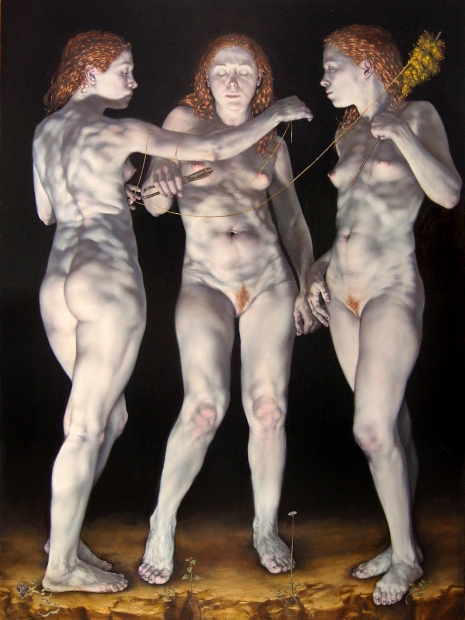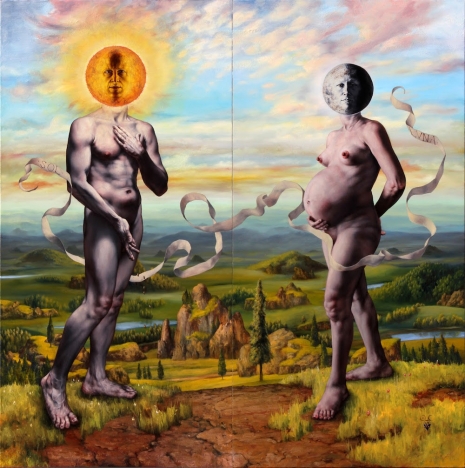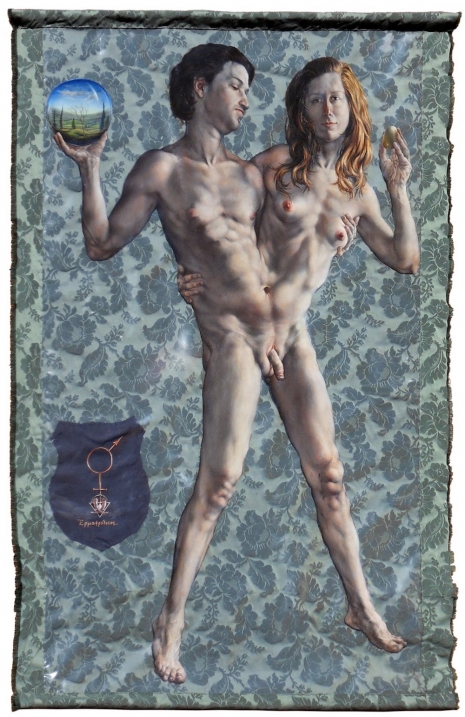
‘The Fates.’
When Martin Luther nailed his Ninety-five Theses to the door of All Saints’ Church in Wittenberg, Germany in 1517, the Pope knew the Catholic Church was in big trouble. Il Papa knew the Catholic Church was going to lose business and business was money.
Business was one of the many things Luther complained about in his Theses. Mainly the notion of indulgences or paying off the Church to wipe clean any sins that meant damnation or purgatory in the hereafter.
Now, all this hoo-hah led to three different Popes (including naughty Pope Julius III) presiding over the Council of Trent—which is only important to our little story because among many other things it got the Pope hip to the idea of spreading Catholicism through art.
This wasn’t a new idea by any stretch but it was something the Church really finessed after Luther and used to its full extent to enforce its will. The Church signed-up all the best artists to create large, powerful, iconic paintings to spread the faith to the illiterate mass market. These paintings were displayed in churches. They told the story of Jesus Christ blah-blah-blah and made pretty damn clear to everyone watching that hellfire, damnation, and sin were very, very real things and only the good old Catholic Church could save you from them.
So, in a way, Martin Luther’s Ninety-five Theses inadvertently led to the first major global advertising campaign. Yeah, yeah, there’d been plenty of paintings and iconography and invading armies with their very own trademarks before, but nothing quite as organized or as universal as the Church. It wasn’t all bad. This eventually led to artists questioning their subject matter and a progression towards more humanist symbolism in painting and an age of Enlightenment.
What the Church encouraged on the grand scale is what we all do today with memes—embed narrative into imagery. Why is this important? Well, it’s a bit of a back story to the baroque world of painting which has in may ways been brought bang up-to-date in the work of an exceptionally talented Argentinian artist and sculptor named Gabriel Grun.
Grun paints bold, classical, figurative canvases that relate to earlier times. He is not copying the past and he is certainly not selling us religion but rather using myth, legend, and iconography to examine this world. The obvious ones are paintings like the The Three Fates where our life is spun, measured, and then cut. Or the body of the invasive many-eyed Argus who reflects our world of constant supervision. Or Leda seduced by Zeus disguised as a swan which has its parallel today in nature altered by science from test tube babies to sperm donation. Or the archer who will shoot down the gods to commit suicide.
His paintings are sometimes humorous but most times heavily charged with sex and sexuality—humanity under the thrall of its shared sexual impulse.
Grun is magpie-like in his use of ideas. The painting “Nari Asva” was inspired by an old Hindu legend of shepherdesses devoted to Krishna who take the form of a horse upon which Krishna rode. In Grun’s painting, the form of the horse is Archimboldoesque and surreal. Other obvious influences include the Tarot Arcana, Albrecht Dürer, and Flemish portraiture.
If, like me, you find Grun’s paintings beautiful and utterly engaging, then you may be interested to know they are for sale and he has a blog where you can find more of his work.

‘Sun and Moon.’

‘Nari Asva.’

‘Hermaphrodite.’
See more of Gabriel Grun’s work, after the jump…





